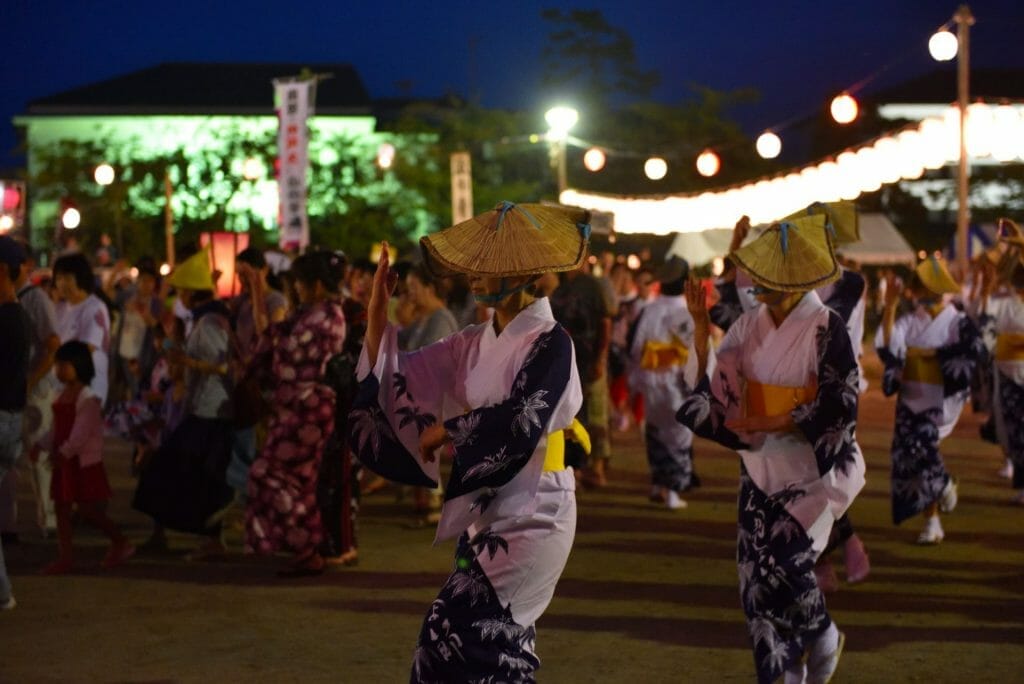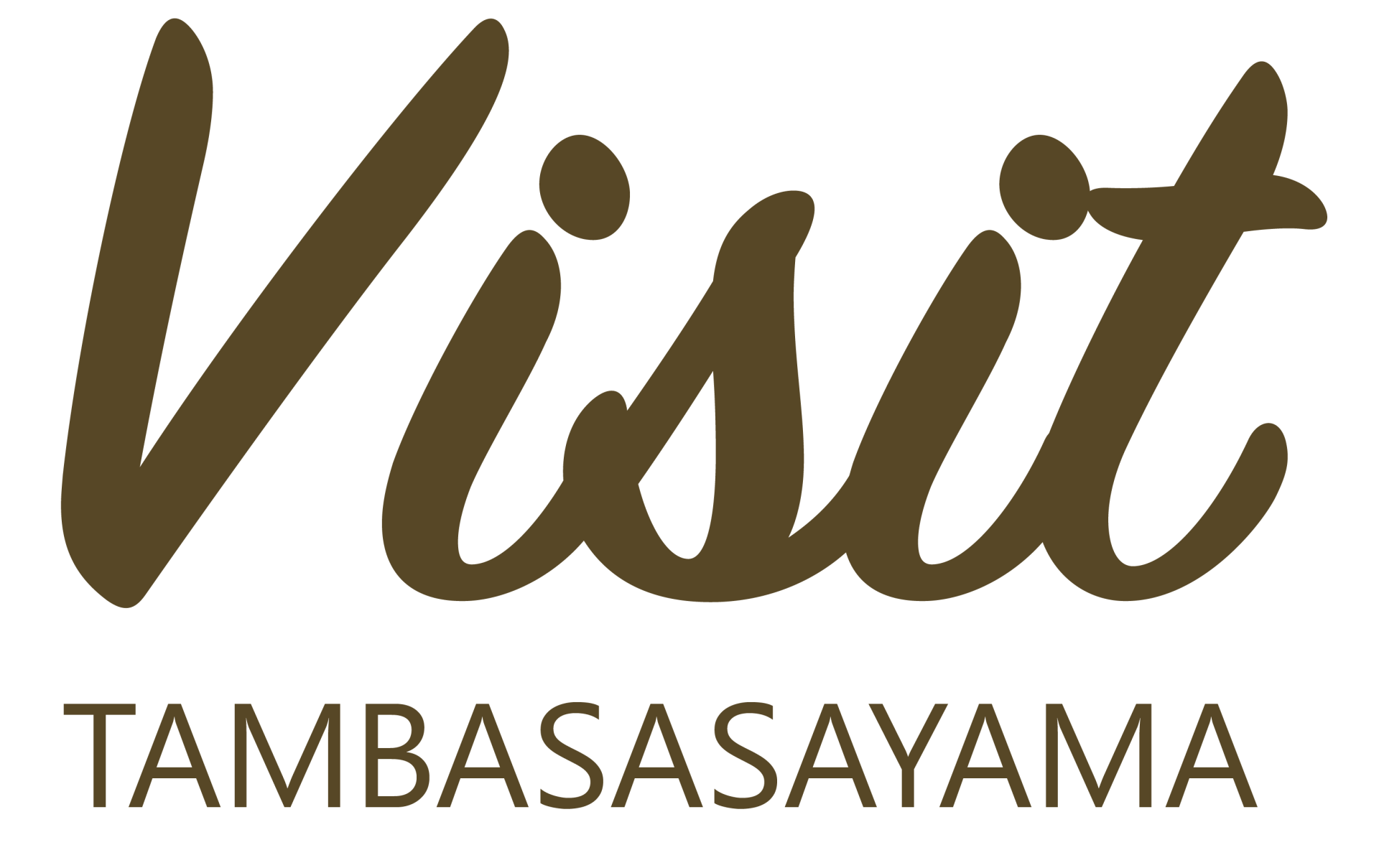A Japan Heritage asset: Tambasasayama Dekansho Bushi–Hometown Memories Passed Down in Folk Song

The designation of “Japan Heritage” was established by the Agency for Cultural Affairs in 2015. “Tambasasayama Dekansho Bushi–Hometown Memories Passed Down in Folk Songs” was one of the initial 18 Japan Heritage assets selected from across Japan.
Then, in 2017, Tamba-yaki pottery was selected as the second Japan Heritage asset in Tambasasayama. Tamba is designated as one of the six oldest kiln sites in Japan. These six production centers for pottery were uniquely conceived and developed in Japan. (Many styles of pottery in Japan were imported from China and Korea.)
Japan Heritage recognizes Japanese tangible and intangible cultural properties and assets, e.g., regional histories, traditions, and customs, that are passed down for generations through narratives. These stories, telling of the legacy of Japanese culture and histories, are designated as “Japan Heritage” by the Agency of Cultural Affairs.
In this special feature, we provide tourist information to go along with the story of the Dekansho Festival.
The story of Tambasasayama Dekansho Bushi–Hometown Memories Passed Down in Folk Songs
Tamba Sasayama, which historically prospered as a castle town, is sung about in the Dekansho Bushi (a type of Japanese song), which originated from the folk songs of the Edo period. It tells the story of the climate, humanity, famous places, and specialties of past eras. All of the locals know this song, which preserves the image of their hometown, fostering attachment to the region.
Even today the story continues to live on as people continue to create new lyrics to add to the song and sing about Tambasasayama to future generations. There are now as many as 300 stanzas to the Dekansho Bushi that let you experience townscapes and traditions from all over the Tambasasayama region.
Cultural assets that make up the story
Note: The following stanzas of the Dekansho Bushi song illustrate the relation of the song to the history and assets of Tambasasayama.
The Dekansho Bushi (Designated Intangible Folk Cultural Asset)
“The monkeys of the Tambasasayama mountain villas perform in the flowery world of Edo.”
This lyric is full of double meanings. The monkeys indicate the local Sasayama people, more specifically, probably students who went to Tokyo. The mountain villas represent the local Sasayama community. “The flowery world of Edo” refers to the affluent Tokyo area during the Edo period.
The first stanza in the Dekansho Bushi has the above lyrics. This folk song, which has continued since the Edo period, was passed down by students from Sasayama to students of the First Higher School of Education (currently the University of Tokyo) in 1898, and was immediately sung by many students and young people all over the country as the song spread.
Every year on August 15 and 16, Tambasasayama holds the Dekansho Festival, where everyone dances while singing the Dekansho Bushi.
The Site of Sasayama Castle
(Nationally Designated Historic Site)
“A thousand trees in bloom, the shadow of the old castle sways in the moat.”
There are a thousand cherry trees around the Sasayama castle moat and area. In spring, the swaying reflection of the blossoms can be seen in the waters of the moat.
Sasayama Castle which is sung about many times in the lyrics, was built by Ieyasu Tokugawa at a key location on the Sanindo Road in 1609 under the Tenka Bushin, a national construction order. In 2000, Sasayama Castle Oshoin Palace was reconstructed and opened to the public. The old site of Sasayama Castle, which is a symbol of Tambasasayama, is visited by many citizens and tourists as the venue for the Dekansho Festival and a popular cherry blossom viewing venue.
Sasayama Castle Town District
(Nationally Designated Important Preservation District for Traditional Buildings)
“My lord is lord of 60,000 koku, now a peaceful castle town.”
“Koku” is the name of the former Japanese system of wealth evaluation based on rice production. That level of wealth (60,000 koku) would have been produced by a bustling town. The whole stanza then means “My lord has a wealth of 60,000 koku, but now we are a quiet castle town.”
The scenery of the castle town that spreads around the site of Sasayama Castle still retains the elements of the castle town as a whole, such as the division of the samurai district and merchant district of the Edo period. This is where you can discover a lot of history just by walking around.
Odagaki Store
(Nationally Registered Tangible Cultural Property)
A main bean processing and sales location that is a collection of 9 buildings with different purposes
“Tambasasayama: Ocha, Kuri, Sansho, fields of Kuromame and Yamanoimo.”
“Ocha” is Japanese green tea. “Kuri” are chestnuts. “Sansho” is the prickly ash or Japanese pepper. “Kuromame” are black soybeans. “Yamanoimo” are Tambasasayama yams.
The special agricultural products of Tambasasayama appear in the Dekansho Bushi. At the Odagaki Store you can see many of these products. The Odagaki Store has been registered as a tangible cultural property for the townscape created by the buildings of the long-established business that was built in the latter half of the 18th century as a sake brewery.
Homei Sake Brewery
(Main building and 8 other buildings with various purposes) (Nationally Registered Tangible Cultural Property)
“Drink up the sake. Heat it in a tea pot. There’s no deity who refuses to drink sacred sake.”
Sake is served both cold and hot.
The Homei Sake Brewery continues to make the sake that is sung about in these lyrics. If you like alcohol and history, please give them a visit. (Sake is an important part of some religious rites in Japan.)
Former Anma Family Residence
(Anma Samurai House Historical Museum)(City-designated Tangible Cultural Property)
“Admirable handsome young men at Tambasasayama Homei school.”
“Homei” refers to the local Homei Prefectural High School. Its predecessor was the Shintokudo Clan School. The Anma family is known for their work to promote education. The samurai residence which is now the Anma Samurai House Historical Museum, was originally the Anma Family House. It still preserves many historical materials.
The Aoyama Historical Village
(the Former Sawai Family Gate House, Aoyama Book collection, Tambasasayama Clan “Aoyama Family” Ancient Documents and University Supplementary Edition Woodblocks, and more) (City-designated Tangible Cultural Properties)
“I read Analects and Mencius, but they didn’t say that I shouldn’t drink.”
The three types of woodblocks (about 1,200 items) that remain in Aoyama History Village were all carved in the Sasayama Domain. These woodblocks, which are related to Chinese studies, are rare in Japan. In addition, the 655 Japanese and Chinese books of the Aoyama Bunko (book collection) are first-class materials of modern Japanese literature. There are many books that convey the spirit of the Sasayama feudal clan, including Chinese, history, and geography books.
Ojiyama Makekirai Inari Shrine
(undesignated)
“Heizaemon is invincible in the flowery world of Edo.”
The Ojiyama Inari Shrine is also known as (“Hate-to-loose” Inari Shrine). Legend says that Eight wrestlers, including Ojiyama Heizaemon, who is mentioned in the lyrics, appeared at the national sumo contest in Edo, now Tokyo, where the wrestlers of the Sasayama Clan were regularly defeated. At that event they won their contests. After the contest the wrestlers disappeared, and when people tried to find them, it was discovered they had all fought under the name of Inari-san (the god of harvests, wealth, fertility, etc.). Because of this, the shrine is still considered good luck for both sumo wrestlers, who often visit the shrine and pray for victory, as well as anyone else who desires to pray for a victory.
At the Inari Shrine there are many Torii gates running up the hill, and in the autumn the changing colors of the leaves are beautiful.
Yakami Castle site
(Nationally Designated Historic Site)
“Floating like an island, Mt. Takashiro can be seen in a sea of Tamba fog.”
Mt Takashiro is the location of the Yakami Castle. It was where the warlord of Tamba Sasayama, Hideharu Hatano, fought and ultimately lost to Akechi Mitsuhide. As the lyrics say, in the foggy season you can often see a sea of clouds in the valleys from the top of the mountain.
Fukusumi
(National Important Preservation District for Traditional Buildings)
“The sound of chestnuts falling on the eaves of Tamba inns, filled with nighttime fog.”
During the Edo period, the Fukusumi district, in the east part of Tambasasayama toward Kyoto, was a busy lodging area. Although Fukuzumi is a rural village, it also played an important role as a lodging area, and this is strongly reflected in the townscape.
Nishio family residence
(main house and 10 other buildings with various purposes) (Nationally Registered Cultural Property)
“Who makes the famous sake of Nada? Tamba brew masters, the pride of Sasayama.”
Tamba sake brew masters are famous throughout Japan. The Nishio family was in the brewing industry as purveyors to the Sasayama clan since the Edo period.
Tamba pottery kilns
(kiln construction techniques)
Tamba climbing kilns
(Nationally Designated Intangible Cultural Property and Prefecture-designated Tangible Folk Cultural Property)
Old Tamba Pottery Collection
(Prefecture-designated Tangible Cultural Property)
“As the bride kicks the wheel, the dirt turns into a jar.”
Here, “jar” indicates Tamba pottery, a traditional craft of Tambasasayama. The Konda area of Tambasasayama produces Tamba pottery and was selected as a Japan Heritage site. Home of Tamba ware, Konda Tachikui is one of the six oldest kiln sites in Japan. Pottery is still actively produced there today by many nationally recognized potters and more local potters as well.
Tamba brew masters
(brewing technology) (undesignated)
“Who makes the famous sake of Nada? Tamba brew masters, the pride of Sasayama.”
There is a theory that the name Dekansho derives from “Dekasegi desho,” which means to leave home to go do seasonal work, in this case indicating the Tamba brew masters going to work in the famous Nada breweries. In the early Showa period (1926-1989), about 780 brew masters and 4,100 skilled brewers were active in various places, including overseas. Currently, there are around 40 active brew masters and about 130 brewers.
Maruyama Village
(Undesignated)
“Tamba inns as snow falls lightly, wild boar dishes that boars jump into.”
The scene sung with these lyrics can be found in Maruyama Village. Ten old Japanese-style houses are lined up, and two of them are still used as farmhouses.
The expansive world of the Dekansho Bushi song
The lyrics introduced here are only a small fraction of all the lyrics. There is said to be more than 300 Dekansho stanzas. For those who want to enjoy sightseeing in Tambasasayama even more deeply, the world you can experience might be expanded even further by examining the lyrics of the Dekansho song.

